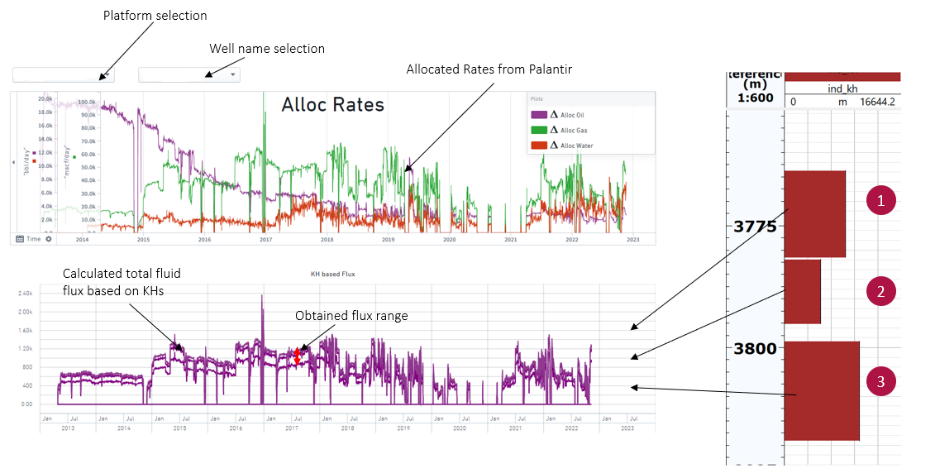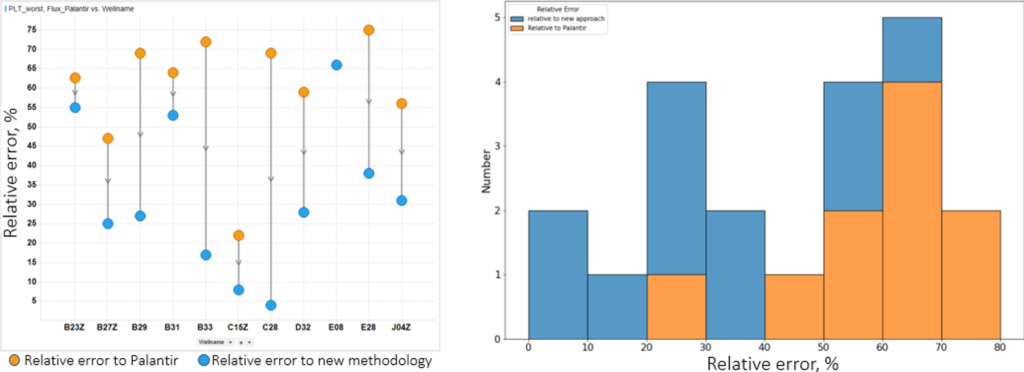Flux Estimation based on Static KH
Flux estimation during production is quite an important factor for the production lifetime of a well. The current methodology for flux estimation can only calculate fluid and gas flux as a single value from the whole completion interval, which is considered risky since there is a likelihood of getting high flux from an individual layer.
The objective of this study is to determine fluid and free gas flux from each individual sand layer in the completion interval. The main advantage of the new methodology is being able to distribute the total fluid rate between individual sand packages according to their static KH properties.
To define the total fluid and free gas rates, liquid and solution gas are analyzed together and considered as the total fluid rate, while free gas is separated according to the gas-oil ratio of the well. In addition, gas contribution to the overall flux is analyzed using Distributed Temperature Sensing (DTS) data in order to detect layers that produce gas, and it is proposed that free gas is assigned to single or multiple sand layers one at a time to present a conservative scenario of free gas coming from a single or a group of sand layers.
This leads to a range of flux for a particular completion interval, where the user can analyze and understand the “flux” concept in the most detailed way possible by looking at the highest flux coming from a single sand layer as well as comparing this range with allocated rates for each day.

This methodology is validated against Production Logging Tool (PLT) data. As a result, the new methodology obtained better results from all of the analyzed well data by decreasing the relative error between fluxes derived from PLT data and the estimated flux value.
By reducing the relative error between the flux derived from PLT data and the estimated flux value, the new methodology is able to produce better results from each set of well data that was studied.



